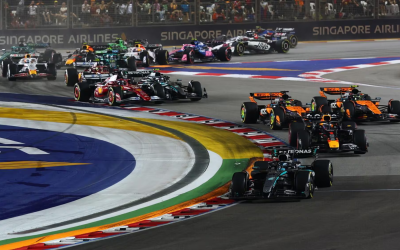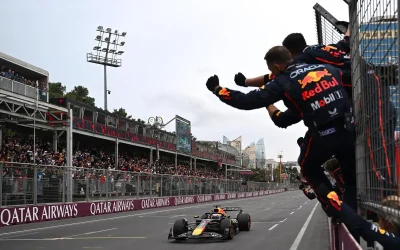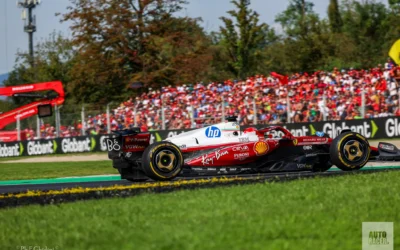Lewis Hamilton’s adaptation to Ferrari is still a work in progress. The 7-time Champion is still familiarising himself with the team, providing input to best express himself in the car. Ergonomics in the car are fundamental in modern F1, allowing drivers to have the best possible feeling in the car.
F1 steering wheels are authentic on-board computers, allowing drivers to change power Unit, brake and differential settings. There are many other functions, including radio communication, DRS, and all the various procedures.
The FIA still leaves a certain freedom in the design of the steering wheel to the teams. There are only a few constraints in for the dashboard and LEDs that are standard for all the teams.
Ferrari has always been very accommodating with the driver requests for steering wheel customisation. This is why the Scuderia’s two drivers often have very different wheels. Notable button panel and paddles alterations are present.
Lewis Hamilton wanted some ‘Mercedes-style’ changes to his steering wheel
Lewis Hamilton’s first outings on the track, both with the SF-23 and the SF-24, allowed for his first indications regarding personalising his steering wheel. After 12 years at Mercedes, it is understandable Hamilton is accustomed to a certain layout.
The change for the 40-year-old is more complex than it may seem. Ferrari’s engine management is different from that of Mercedes power unit made in Brixworth.
This is a significant change that required a certain amount of adaptation work. Hamilton worked with his engineers to make the first steering wheel customisations during the SF-25 filming day in Fiorano.
Hamilton’s official Ferrari wheel is visible in testing, which is very different from Leclerc’s in terms of the gear selector. The British driver requested a design very similar to the one used in Mercedes, with a thinner rocker positioned higher than Leclerc’s.
There are still few changes regarding the clutch lever. Like his teammates, Hamilton’s can still be activated with the right hand using the special finger recess.

Lewis started developing his steering wheel by using Leclerc’s configuration during the TPC tests in January with the SF-23. He then requested the appropriate modifications on that basis.
Ferrari’s drivers do not differ much in terms of ergonomics and driving style. This has made the changes less extreme than those Sainz initially requested when he joined the team.
In fact, the Spaniard requested a steering wheel with a double clutch lever. This was consistent with what he used at McLaren. Meanwhile, Hamilton has spent some time using a single lever at Mercedes.
“Fortune” Hamilton’s technicians meant that the basic setting of the steering wheel between Ferrari and Mercedes was not radically different. Still, the 7-time Champion asked for some adjustments in terms of the button layout.
The steering wheel of the Ferrari #44 car has mainly seen a repositioning above all of the direct inputs (which require only one action with the hands). Examples of this are for engaging neutral and the speed limiter in the pit lane.

Compared to Leclerc, Hamilton prefers a lower position closer to the thumb. For Leclerc’s steering wheel, they remain at the top at the ends of the steering wheel (P button and N button).
The upper part of the button panel, while maintaining the same layout regarding the position of the buttons, sees the assignments of the individual buttons swapped.
Hamilton’s DRS button should now be at the top left, whereas Leclerc typically has the “Neutral” button.
Hamilton also prefers to scroll through the information to be displayed on the dashboard using both hands, while Charles only uses the thumb of his right hand, having the “+10” and -“10” buttons on the right side of the crown.




